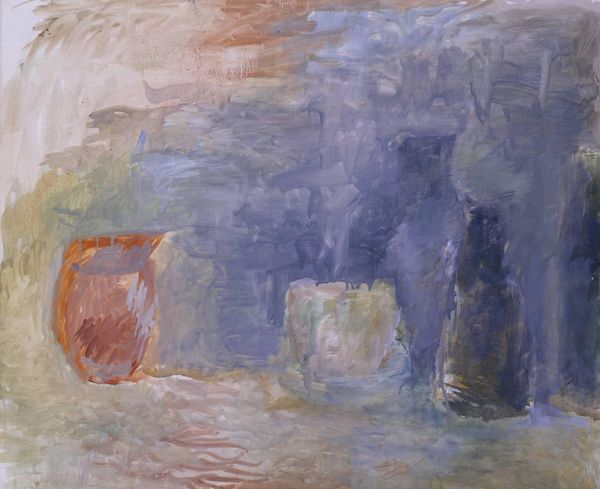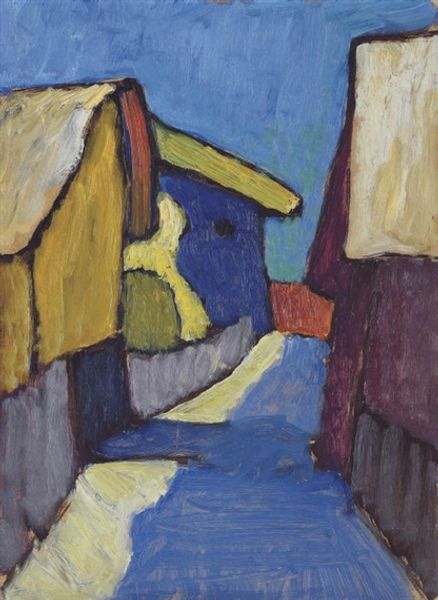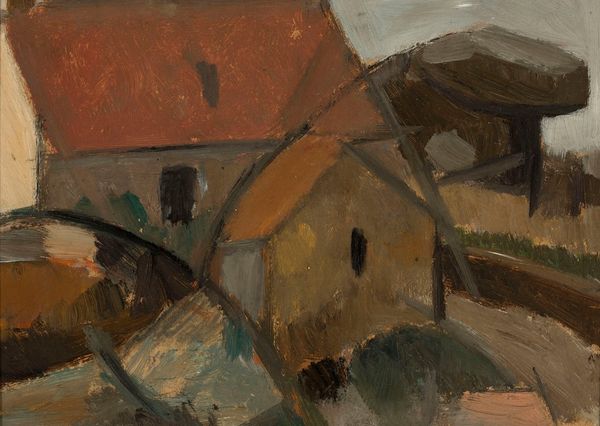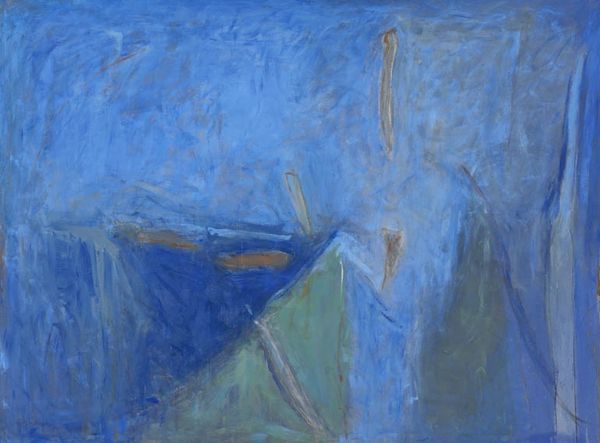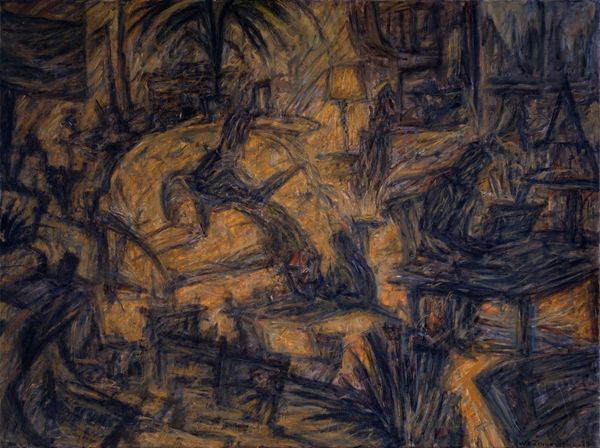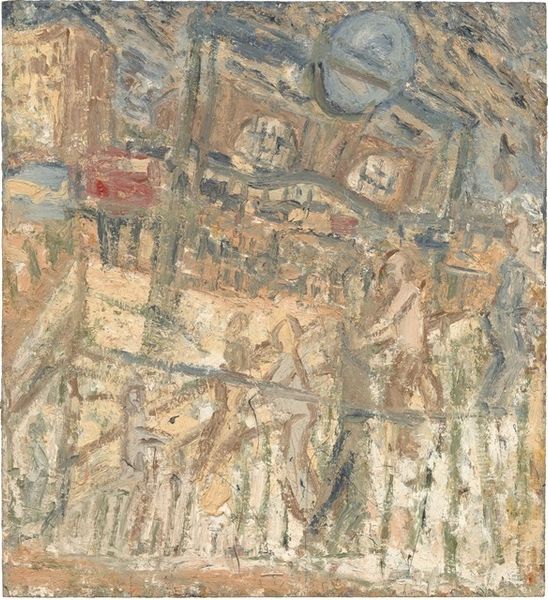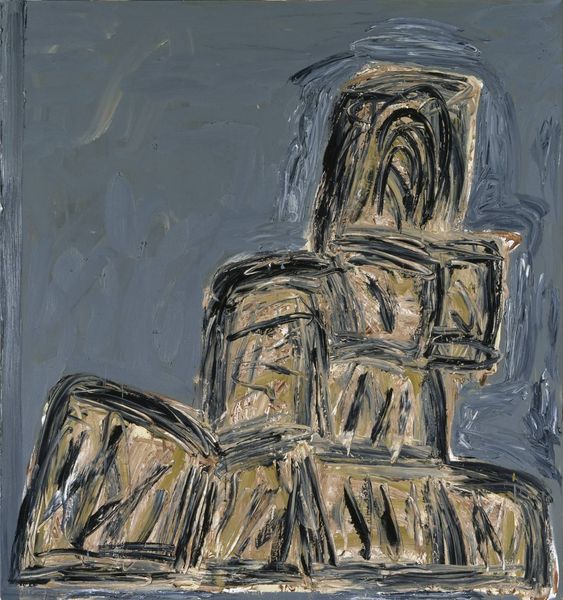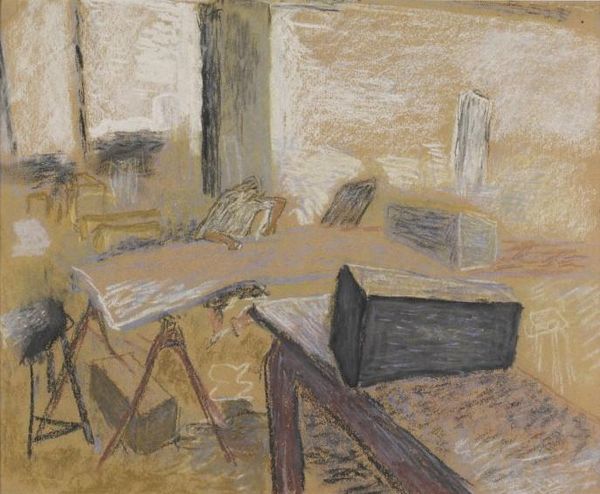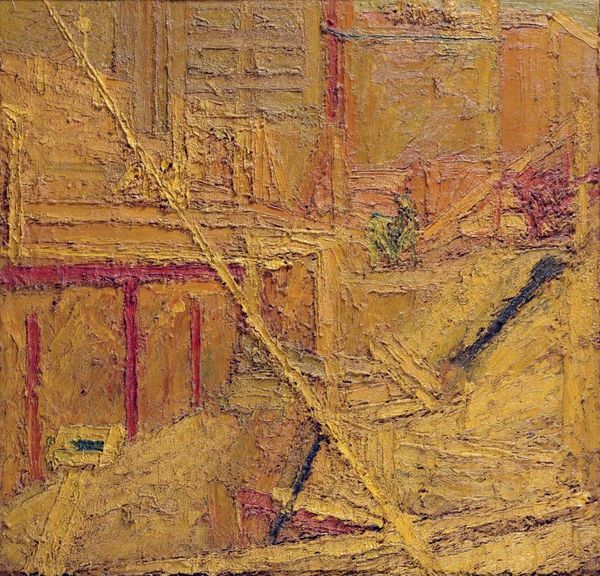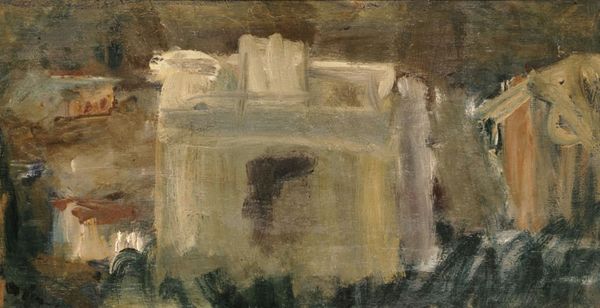
Dimensions: support: 760 x 640 mm
Copyright: © The estate of Dorothy Mead | CC-BY-NC-ND 4.0 DEED, Photo: Tate
Editor: This is Dorothy Mead's "Chessboard," an oil painting on canvas held at the Tate. It's quite abstract, almost aggressively so. What can you tell me about its historical context? Curator: Mead was working in a post-war environment where abstraction was ascendant, seen as a progressive, even democratic mode. Do you see how the visible brushstrokes and lack of clear subject hierarchies might reflect a rejection of traditional power structures in art? Editor: I see how it moves away from traditional representation, but the chessboard suggests rules and strategy, almost like a game of power itself. Curator: Precisely! That tension between freedom of expression and the underlying constraints of a structured game makes it so compelling. Perhaps Mead is commenting on the illusion of choice within any social framework. Editor: That's a fascinating point; it gives me a completely different view of the work. Curator: Indeed, art often serves as a mirror reflecting both our aspirations and the systems that shape us.
Comments
Join the conversation
Join millions of artists and users on Artera today and experience the ultimate creative platform.
tate 6 months ago
⋮
Dorothy Mead was first taught by Bomberg at Dagenham School of Art. There, his insistence that individual exploration was more important than technical concerns caused her to complain to the college. Later, she became a devoted follower and was a founder member of the Borough Group. This is one of a series of works made by Mead. Though the subject matter and colouring are quite different from the work of Bomberg and other Borough students, the use of thick paint and strong diagonal brushmarks is typical. Gallery label, July 2004
